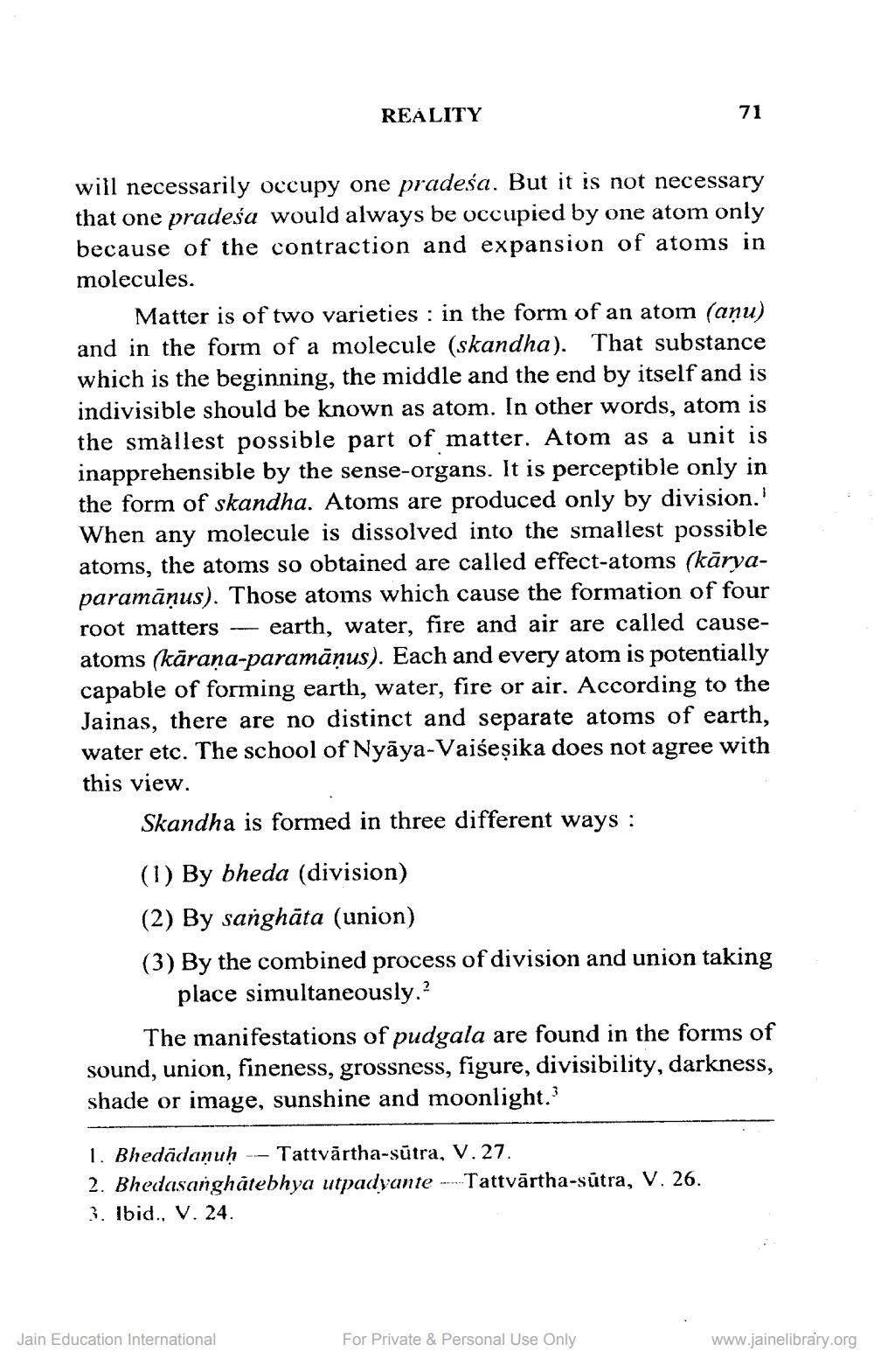________________
REALITY
71
will necessarily occupy one pradeśa. But it is not necessary that one pradeśa would always be occupied by one atom only because of the contraction and expansion of atoms in molecules.
Matter is of two varieties : in the form of an atom (aņu) and in the form of a molecule (skandha). That substance which is the beginning, the middle and the end by itself and is indivisible should be known as atom. In other words, atom is the smallest possible part of matter. Atom as a unit is inapprehensible by the sense-organs. It is perceptible only in the form of skandha. Atoms are produced only by division.' When any molecule is dissolved into the smallest possible atoms, the atoms so obtained are called effect-atoms (kāryaparamānus). Those atoms which cause the formation of four root matters --- earth, water, fire and air are called causeatoms (kāraṇa-paramāņus). Each and every atom is potentially capable of forming earth, water, fire or air. According to the Jainas, there are no distinct and separate atoms of earth, water etc. The school of Nyāya-Vaiseșika does not agree with this view.
Skandha is formed in three different ways : (1) By bheda (division) (2) By sanghāta (union) (3) By the combined process of division and union taking
place simultaneously.”
The manifestations of pudgala are found in the forms of sound, union, fineness, grossness, figure, divisibility, darkness, shade or image, sunshine and moonlight.}
1. Bhedādanu--- Tattvārtha-sūtra, V.27. 2. Bhedasanghâtebhya utpadyante --Tattvārtha-sútra, V. 26. 3. Ibid., V. 24.
Jain Education International
For Private & Personal Use Only
www.jainelibrary.org




